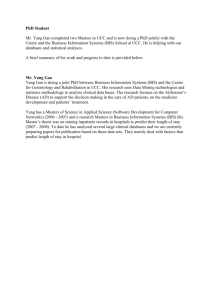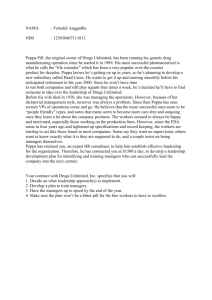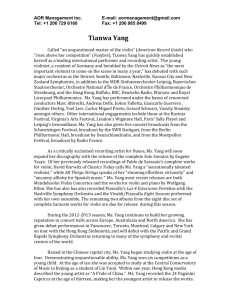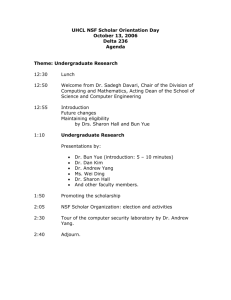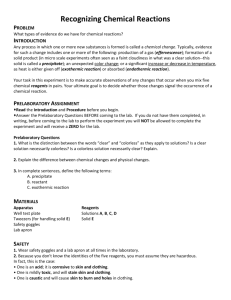LING 417 Summer 2014 Exercise One
advertisement
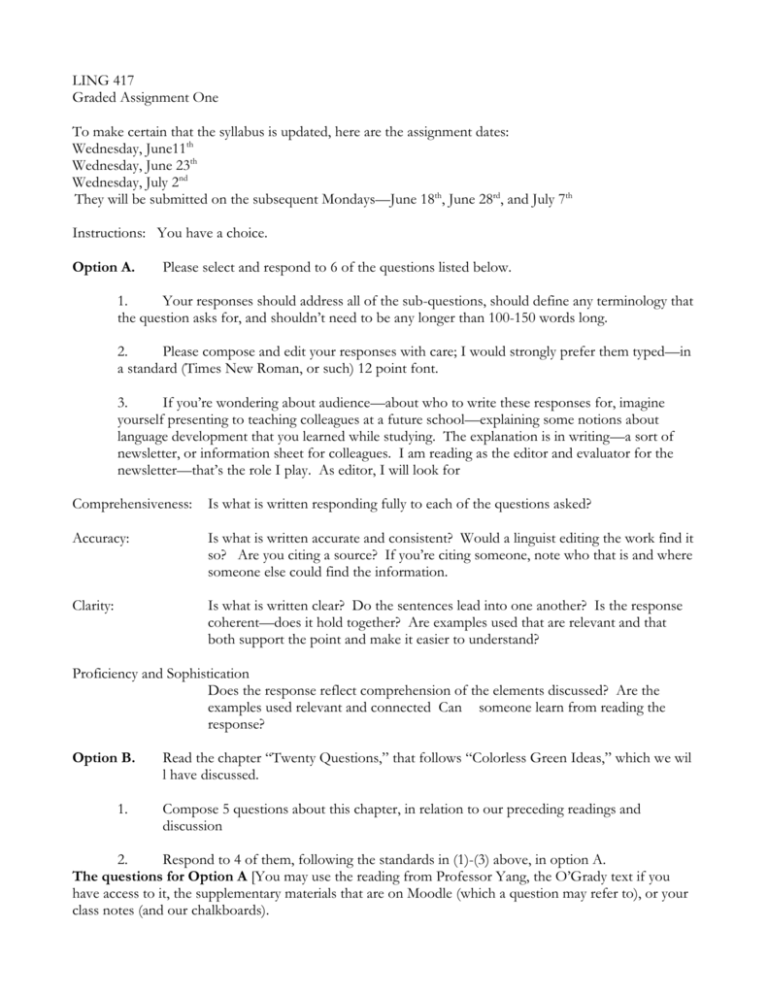
LING 417 Graded Assignment One To make certain that the syllabus is updated, here are the assignment dates: Wednesday, June11th Wednesday, June 23th Wednesday, July 2nd They will be submitted on the subsequent Mondays—June 18th, June 28rd, and July 7th Instructions: You have a choice. Option A. Please select and respond to 6 of the questions listed below. 1. Your responses should address all of the sub-questions, should define any terminology that the question asks for, and shouldn’t need to be any longer than 100-150 words long. 2. Please compose and edit your responses with care; I would strongly prefer them typed—in a standard (Times New Roman, or such) 12 point font. 3. If you’re wondering about audience—about who to write these responses for, imagine yourself presenting to teaching colleagues at a future school—explaining some notions about language development that you learned while studying. The explanation is in writing—a sort of newsletter, or information sheet for colleagues. I am reading as the editor and evaluator for the newsletter—that’s the role I play. As editor, I will look for Comprehensiveness: Is what is written responding fully to each of the questions asked? Accuracy: Is what is written accurate and consistent? Would a linguist editing the work find it so? Are you citing a source? If you’re citing someone, note who that is and where someone else could find the information. Clarity: Is what is written clear? Do the sentences lead into one another? Is the response coherent—does it hold together? Are examples used that are relevant and that both support the point and make it easier to understand? Proficiency and Sophistication Does the response reflect comprehension of the elements discussed? Are the examples used relevant and connected Can someone learn from reading the response? Option B. 1. Read the chapter “Twenty Questions,” that follows “Colorless Green Ideas,” which we wil l have discussed. Compose 5 questions about this chapter, in relation to our preceding readings and discussion 2. Respond to 4 of them, following the standards in (1)-(3) above, in option A. The questions for Option A [You may use the reading from Professor Yang, the O’Grady text if you have access to it, the supplementary materials that are on Moodle (which a question may refer to), or your class notes (and our chalkboards). . . 1. What does Professor Yang mean by “hidden assumptions” in the context of first language development? What other terms are used? How is working in the context of this framework toward an understanding of children’s language development supported—in other words, what evidence is there for such a conceptual framework for research? 2. What does it mean to say that a child must unlearn or rule out all the almost 7,000 languages she could learn at birth to drill down into the one in her environment? What evidence points to this perspective as a helpful way of thinking? 3. What is the “play” between the production and perception of the sounds in spoken language, respectively? How does this interplay support infants as they “figure out” the workings of the language that is around them. 4. What is “structure dependence” and what role(s) does it play in figuring out “the language game”? 5. What are the major positions about CDS and its role in language development? How do they interact with claims about poverty of stimulus, and the consequences of such a conceptual framework? 6. What are the major questions that need to be answered if we are to understand how children learn words? What 7. How does work with children’s development of signed languages (we referred mostly to ASL and a bit to Nicaraguan Sign Language) contribute to our understanding of language development in general? 8. What might you say to a parent who wants to help his 18 month old “learn more words”? 9. Describe the evidence in “Colorless Green Ideas” that support Professor Yang’s claim that UG cannot be learned.. 10. Professor Yang strongly implies an association between prescriptive grammatical rules and a combination of nostalgia, ignorance, and even prejudice. What is the evidence from language that he uses in support of this association? How effective do you think his case is? 11. On pages 35-41 of his book, The discovery of spoken language, Professor Jusczyk discussed “bootstrapping” What sorts of bootstrapping are there? How are they supposed to work? How does bootstrapping show up in “Colorless Green Ideas?




